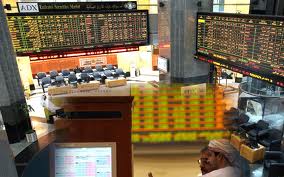The economic center of the world is quickly shifting Eastwards. Emerging Asia has been the source of most economic global growth in the last decade and this is leading to structural changes that are also impacting the oil-exporting countries of the GCC. 
First and foremost, the rising economic activity in emerging Asia has contributed to a significant increase in demand for energy goods, which has led the region to become the Gulf Cooperation Council’s main export partners, said an economic report prepared by Kuwait China Investment Co, KCIC. Many reasons have contributed to this phenomenon, including the migration of manufacturing to emerging Asia, the US’s increasing reliance on its domestic energy supplies, emerging Asia’s massive rise in infrastructure construction and its ever growing middle class, adds the report. However, this is not the only change in the world’s trade structure. Imports to the GCC have also witnessed a shift in trend: emerging Asia has become the GCC’s main source of imports. Some 20 years ago, the Gulf was importing only 15pct of its merchandise from emerging Asia, while more than half of imported goods were coming from the G3. Today, the Gulf imports more from emerging Asia than it does from the G3, making up more than 35pct of its total import share. As the graph shows, the trend accelerated in the last decade, where emerging Asia’s imports to the GCC gained 15pct and G3 imports lost 12pct of total share. Several factors explain why the GCC is now looking East for its purchases. GCC countries have a very particular profile. Agricultural and manufacturing activity is minimal, while oversized extraction industries oriented towards exports provide lavish returns that are used to import everything. The GCC is increasingly looking East in its trade exchanges, increasing the interdependence between the two regions. The Asia – GCC relation is not developing on competition but on complementarity. With the shift eastwards of manufacturing activity, Asia became the main source of its imports. With falling energy needs in the US, Asia is becoming the most important source of demand for GCC’s exports. Emerging Asia’s strong demand for oil will continue to benefit the Gulf for at least the next decade. Financial and investment links are also strengthening. Inter-regional foreign direct flows are rising and the number of industrial projects awarded to Asian companies in the region is also increasing rapidly. This shift in trend is not a temporary one. There are powerful incentives for this partnership to last. The next two decades will be about Asia switching its focus from exports to domestic demand. Asian trade surplus will start to decrease, and regions with large amounts of savings like the GCC can play a central role in funding future Asian growth, ensuring at the same time the sustainability of global oil demand
Source : KUNA












